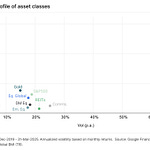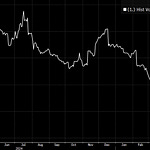To investors,
Carlo Collodi wrote the famous novel The Adventures of Pinocchio in 1883. Geppetto, the impoverished woodcarver, aspires to switch careers and become a puppeteer. He gathers wood blocks, sets aside dedicated time, and creates a marionette named Pinocchio.
This timeless story has a number of similarities to the current financial market.
First, central banks are the Geppetto equivalent. These organizations trace their history back to 1668 when the Swedish Riksbank was created to lend the government money and clear commerce transactions. The role and responsibility of the central bank was unchanged for centuries, but around the turn of the 20th century these organizations embodied Geppetto’s desire to change jobs. Central banks began to manipulate interest rates in an effort to stabilize economies, which was followed by the abandonment of the gold standard and the creation of fiat currencies.
Second, central banks have perfected the occupation of puppeteer. They sit behind the scenes and pull strings to watch asset prices dance. This is painfully obvious when you evaluate a chart of the top 10 central bank balance sheets since 2006. It is easy to see where they have injected immense amounts of liquidity, which leads to subsequent asset price increases, along with demand destroying liquidity removal in the market creating the opposite effect.
A micro example of how this mechanism plays out is the last 60 days or so. There has been a $653 billion increase in global liquidity from the top 10 central banks. Naturally, stocks and other assets have been rallying. This follows the significant drop in asset prices during 2021 that coincided with the draining of almost $2 trillion from the same balance sheets.
Gordon Johnson recently pointed out that this net increase in liquidity has been largely due to China’s $500+ billion injection during the same 60 day period. At the same time, the Fed and ECB have been sucking liquidity out of the system to the tune of $150 billion and $430 billion respectively.
Central banks want asset prices to go up, they pump the system with liquidity. Central banks want asset prices to go down, they drain liquidity from the system. Modern day Geppetto.
It gets even better though.
🚨 The rest of this letter is only available for paying subscribers to The Pomp Letter. Their support makes this work possible. If you’re not a subscriber, consider subscribing to read the rest of this letter and help us continue to create independent work on financial markets 🚨












